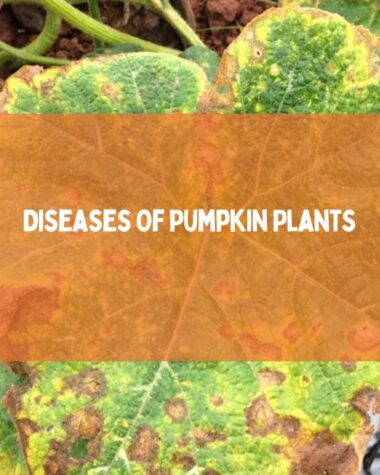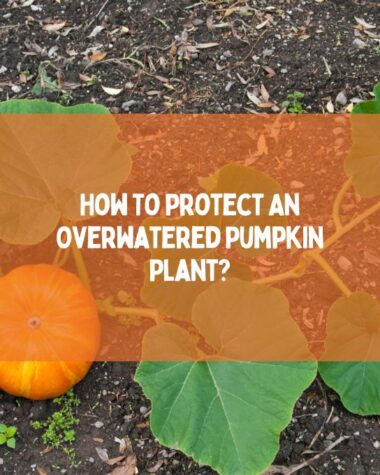Pumpkin plant care means getting the soil ready, planting the seeds or seedlings, giving them enough water and food, keeping pests and diseases away, and harvesting and storing the pumpkins the right way.
Pumpkin plants are a popular choice for home gardens due to their attractive vines, colorful fruits, and versatility in cooking. Taking good care of your pumpkin plants is essential to ensuring a bountiful harvest of healthy and flavorful pumpkins.
In this article, you’ll learn how to make sure your pumpkin plants are healthy and give you a lot of tasty and fun pumpkins.
8 Ways For Pumpkin Plants Care
How do I care for my pumpkin plants?
Pumpkin plants are a popular addition to many home gardens. They are loved for their bright colors, tasty taste, and many uses in the kitchen. To ensure a bountiful harvest of healthy and flavorful pumpkins, it’s important to take good care of pumpkin plants throughout the growing season.
With the right care, your pumpkin plants can thrive and provide a delicious and festive addition to your fall harvest.
1. Provide Sunlight To Plants
Sunlight is crucial for the healthy growth of pumpkin plants. They require at least 6 hours of direct sunlight each day to thrive. Choose a planting location that receives full sun, which means a minimum of 6 hours of direct sunlight per day.
If you live in an area with hot summers, it may be beneficial to provide some shade during the hottest part of the day to prevent sunscald or wilting. Make sure that the soil is well-draining to prevent waterlogging and root rot, which can also damage the plants.
By providing adequate sunlight, you can help your pumpkin plants grow strong and healthy and produce a bountiful harvest of delicious pumpkins.
Relaled Reading
2. Use Proper Soil
Soil plays a vital role in the growth and health of pumpkin plants. To care for pumpkin plants, it’s important to prepare the soil properly. Pumpkins grow best in well-draining soil that is rich in organic matter. Sandy loam or loam soil types are ideal.
Before planting pumpkin seeds or seedlings, amend the soil with organic matter such as compost, aged manure, or leaf mold. This will help to improve the soil’s nutrient content, structure, and water retention capacity.
The optimal soil pH for pumpkin plants is between 6.0 and 7.0. Test your soil’s pH level using a soil test kit, and adjust the pH as needed using lime or sulfur.
Wait until the soil temperature reaches at least 60 degrees Fahrenheit before planting pumpkin seeds or seedlings. Warm soil temperatures help to promote good root development and overall plant growth.
3. Watering Your Plants
Watering is a crucial part of caring for pumpkin plants, as they require consistent moisture to grow and develop properly. Water pumpkin plants deeply once or twice a week, depending on weather conditions.
When you water, make sure to saturate the soil around the plants rather than just the surface. Avoid overhead watering, as this can increase the risk of foliar diseases. Instead, use a soaker hose or drip irrigation to deliver water directly to the soil around the plants.
Water pumpkin plants in the morning, if possible, to allow the leaves and soil to dry out during the day. This can help reduce the risk of fungal diseases. Check the soil around pumpkin plants regularly to make sure it is moist but not waterlogged.
Overwatering can lead to root rot and other problems. You can help ensure that your pumpkin plants receive the consistent moisture they need to grow and develop properly and produce a healthy and bountiful harvest of delicious pumpkins.
4. Temperature and Humidity
Temperature and humidity are important factors in caring for pumpkin plants, as they can affect the growth, health, and yield of the plants. Pumpkins thrive in warm temperatures, with an optimal temperature range of 70 to 85 degrees Fahrenheit during the day and 60 to 70 degrees Fahrenheit at night.
If the temperature drops below 50 degrees Fahrenheit, it can stunt the growth of the plants. Protect young plants from cold temperatures by covering them with a row cover or other protective barrier.
Pumpkins prefer moderate humidity levels between 50% and 70%. High humidity can increase the risk of fungal diseases, while low humidity can cause water stress and reduce growth.
Provide good air circulation around the plants to help reduce humidity and prevent fungal diseases. High temperatures can cause heat stress in pumpkin plants, which can reduce growth and yield.
5. Use Enrich Fertilizer For Plants
Fertilizing is an important aspect of caring for pumpkin plants, as it provides essential nutrients for healthy growth and maximum yield. Pumpkin plants should be fertilized when they are actively growing and producing new leaves and vines.
Use a balanced fertilizer that contains equal amounts of nitrogen, phosphorus, and potassium. A typical ratio for pumpkin plants is 5-10-10 or 10-10-10. Organic fertilizers, such as compost, aged manure, or fish emulsion, can also be used.
Water the plants well after fertilizing to help the nutrients penetrate the soil. Fertilize pumpkin plants every 3 to 4 weeks throughout the growing season, up until about 2 weeks before harvest. Avoid over-fertilizing, as this can lead to excessive foliage growth and reduced yield.
6. Pollination For Caring Plants
Pollination is an important aspect of caring for pumpkin tree plant care, as it is essential for the development of fruit. Pumpkin plants have both male and female flowers on the same plant.
Male flowers are on long, thin stems and do not have a swollen base, while female flowers have a swollen base that will develop into the pumpkin. Bees and other pollinators are essential for pollinating pumpkin flowers.
If you have a small garden or notice that there are not many pollinators in your area, you can hand pollinate your pumpkin plants. To do this, use a small brush or cotton swab to collect pollen from the male flowers and transfer it to the center of the female flowers.
7. Mulching Around Plants
Apply mulch to your pumpkin plants after the soil has warmed up and the plants have begun to establish themselves. This is usually about 3–4 weeks after planting.
Organic mulches, such as straw, leaves, or grass clippings, are the best choices for pumpkin plants. They will break down over time and add nutrients to the soil. Avoid using plastic or synthetic mulches, as they can trap heat and moisture, leading to plant stress.
Apply a layer of mulch 2-3 inches thick around the base of the pumpkin plants, taking care not to cover the stems or leaves. Thicker layers can lead to excessive moisture and fungal diseases.
By using organic mulch to conserve moisture, suppress weeds, and improve soil fertility, you can help ensure the healthy growth and maximum yield of your pumpkin plants.
8. Pests and Diseases
Pests and diseases can pose a serious threat to the health and productivity of pumpkin plants. Here are some diseases for preventing and treating common pumpkin pests and diseases:
- Powdery mildew: This fungal disease appears as a white, powdery coating on the leaves and stems of pumpkin plants. To prevent powdery mildew, avoid overhead watering and overcrowding of plants. If powdery mildew appears, treat with a fungicide.
- Squash bugs: These insects can cause wilting, yellowing, and death of pumpkin plants. To prevent squash bugs, keep the garden clean and free of debris, rotate crops, and handpick or treat with insecticides.
- Cucumber beetles: These insects can transmit bacterial wilt, which can kill pumpkin plants. To prevent cucumber beetles, use row covers until the plants start to flower, handpick or treat with insecticides.
- Vine borers: These insects can bore into the stems of pumpkin plants, causing them to wilt and die. To prevent vine borers, use row covers until the plants start to flower, and handpick or treat with insecticides.
- Cutworms: These insects can sever the stems of young pumpkin plants at the soil line. To prevent cutworms, use collars made from paper or cardboard around the base of the plants, or treat with insecticides.
Related Reading
Conclusion
Caring for pumpkin plants requires attention to several key factors, including sunlight, soil, water, temperature, humidity, fertilization, pollination, pests and diseases, and mulching.
Providing adequate amounts of each of these factors can help ensure healthy growth and maximum yield from your pumpkin plants. You’ll also need to pay attention to temperature and humidity levels, ensuring that the plants are not exposed to extreme heat or cold.
Proper pollination is crucial for the development of healthy pumpkin fruit, so be sure to encourage pollinators to visit your garden. Pests and diseases can pose a significant threat to the health and productivity of your pumpkin
Thanks for reading!







